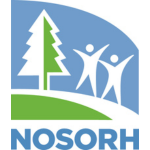By: Beth Blevins
County-level data—particularly for rural counties—wasn’t always readily available in Nevada. But the (and the associated Nevada Instant Atlas website) changed all that.
Now in its eighth edition, the Data Book, complied by the Nevada State Office of Rural Health (NV SORH), provides comprehensive information on all counties in the state. The data in its more than 100 tables varies from the broad—e.g., county populations—to the more specific, e.g., number of licensed physical therapists by county. Though issued only every other (odd) year, when the Nevada legislature is in session, the data is dynamic rather than static, according to Tabor Griswold, Health Services Research Analyst at the NV SORH.
“Data goes into the on our website first, then we pull it out for the Data Book,” Griswold explained. “We continually add or update new points of data to the website.” In addition, the Instant Atlas, which boasts more than 200 users each month, “is unique because it offers time trending,” she said. “When you bring it up visually, there is a bar that shows all the data going back to when we first started collecting it. When possible, the source of the online data is linked between the website and the original source.”
Click Image to Enlarge
Griswold said that users can also use the Nevada Instant Atlas to assess the impact of legislation over time. For example, she said, “the expansion of public nursing programs over the past decade, and changes in advance practice nursing scope of practice have led to dramatic increases in RNs and advance practice RNs, which is documented in the Atlas.”
The Data Book is available electronically as a PDF, as well as a limited number of hard copies. “We bring copies of the Data Book to “Rural Health Day at the Legislature” to share with members of the legislature and the governor’s staff, as well as hospital administrators attending the event,” said John Packham, Director of Health Policy Research at the NV SORH.
The first Data Book rose out of the frustration Packham experienced after he arrived at the Nevada SORH, whenever he needed to find rural data. The state was collecting data for Clark County (i.e., Las Vegas), Washoe County (i.e., Reno), “and the ‘balance of the state’,” Packham said. “But the ‘balance of the state’ was the 14 rural counties we worked with on a routine basis. Whether it was for a grant or a county commissioners’ meeting, we would have to mine existing data to try to find out what was going on at the county level.”
Putting that information into the Data Book made everything easier to access, Packham said. But it also made a compelling case for the state to begin collecting and breaking data down by county, he said, “because there were some pretty substantial variations between a healthy county and an unhealthy county—certainly on health workforce data. It also kick-started our practice of going to the 38 state licensing boards for health professions, getting their data, and breaking it out by county.”
The NV SORH has found effective use of the Instant Atlas for two purposes. “For community health needs assessments, one of our starting points is to abstract or pull out the county-level data, and package it in the form of a county-level report,” Packham said. The Nevada SORH also uses its data to help rural county commissioners who are trying to establish or convene local boards of health. “Of the 14 Nevada counties that are rural or frontier, none have local health departments—their public health services are provided through the state of Nevada,” Packham said. “But there’s been an awakening of interest among them to convene local boards of health—or at least put public health issues before their commissioners. Our office is supporting these efforts to the extent that they need data to start the discussion.”
Packham said that the Data Book is funded through a combination of staff partly supported by federal Flex funds, other types of state dollars, and pieces of grants and contracts. In other words, “funding is complicated,” he said. Since the Nevada SORH is university-based, “we train undergraduates in the data collection process and to understand data base development —that’s a win-win,” Packham said. “They’ve been really instrumental in loading and double-checking all of the new data.”
The Data Book has proven a success, used by legislators, county commissioners, and hospital administrators. Perhaps more importantly, according to Packham, it has improved the visibility of the NV SORH. “Over the 15 years we’ve been doing this, people know that this resource comes from the State Office and the School of Medicine at the University at Reno,” he said. “It’s our flagship publication. It has increased the degree that we’re the first resource that people go to, especially on workforce data.”
Does your SORH have a “Promising Practice”? We’re interested in the innovative, effective and valuable work that SORHs are doing. Contact Ashley Muninger at ashleym@nosorh.org to set up a short email or phone interview in which you can tell your story.
